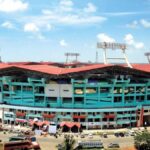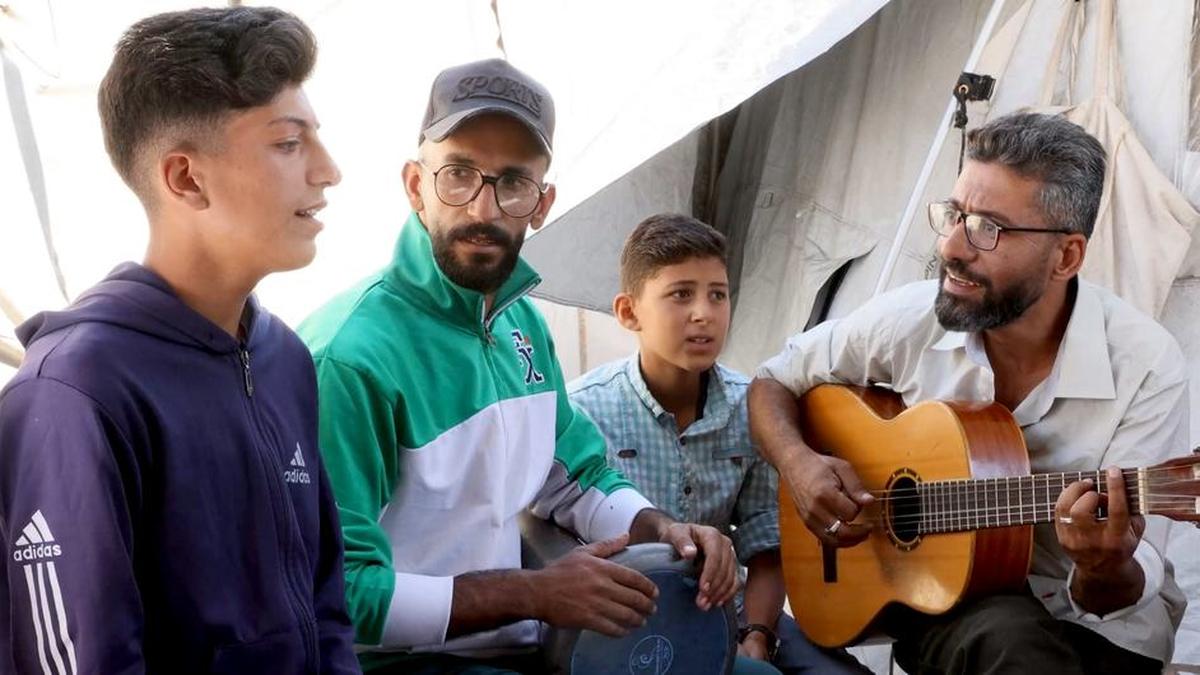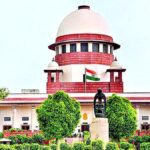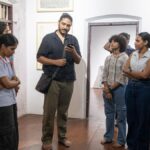Even as the world anxiously awaits peace in Gaza, a powerful artistic response to the relentless suffering is echoing across social media. Palestinian composer and writer Nahed Elrayes’s remix of Gaza-based music teacher Ahmed Muin Abu Amsha’s haunting ‘Drone Song,’ released on October 2, has struck a deep chord much like the original. Nahed had earlier explored a similar theme of love, loss, and resilience in ‘A Lover from Palestine’, a Mahmoud Darwish-inspired composition that evolved into a large video project featuring 45 Palestinians and won international acclaim. His remix intensifies the portrayal of the drone sounds that have become a grim part of daily life for children in Gaza. In a region scarred by violence, this song is more than a sonic experience — it’s a testament to how art can stand witness, evoke empathy and help heal.
The ‘Drone Song’ took shape in a Gaza classroom. Ahmed noticed his students becoming increasingly distressed. They constantly complained of headache and anxiety triggered by the unceasing hum of Israeli military drones, which, according to their teacher, “is the baddest sound in this war”. When the children requested that lessons to be stopped, Ahmed came up with an alternative. He told them to sing along with the sound. This act of creative defiance — turning the drone’s oppressive buzz into a haunting chorus –– has captured global attention as videos of the performances have been widely shared on social media platforms.
The ‘Drone Song’ also carries forward a literary legacy. It is based on Palestinian cultural icon Zaid Hilal’s folk-inspired work ‘Shayl ya Jamal Shayl. And this is how it goes: ‘Carry on, oh camel driver, carry on, The martyr’s blood is perfumed with cardamom, woe, woe unto the oppressor, woe to him from God, I shall stay up with the stars of the night, calling out to him.’
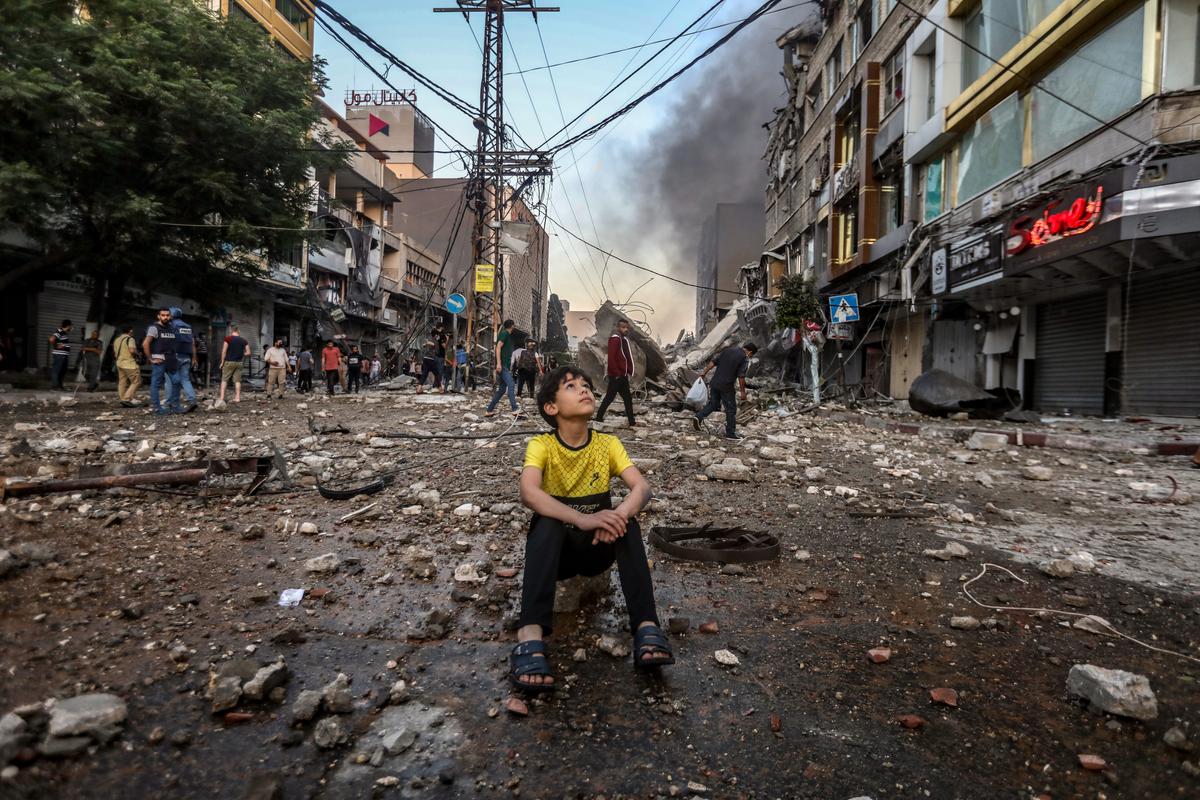
A boy sitting in the middle of the street witnessing the destruction that occurred in one of the main commercial streets in Gaza
| Photo Credit:
UNDP/PAPP
“My musical group Gaza Birds Singing is made up of displaced children and talented music teachers. Together, we sing for love, for freedom, for life. Through music, we try to give children their voice back and offer hope. I dream of sharing our music with the world, travelling, performing, and being a voice of beauty from Gaza — not a voice of war. We believe the world can be a better place, if only it would listen to the voice of art,” says Ahmed in his website songsfromtherubble.
Since Ahmed’s peace-inspired musical initiative, a wave of solidarity performances based on the ‘Drone Song’ has emerged, with artistes from diverse genres and geographies lending their voices – from Californian hip-hop artiste Alia Sharrief, founder of Hijabi Chronicles, known for using music as a tool for empowerment, to New York-based singer-songwriter Morley Shanti Kamen and violinist Arun Ramamurthy, who collaborated with Abu Amsha on the track ‘HeartFlower’ and the song ‘Zahrat al-Mada’en’. From Palestinian-American Artist Collective, who created a choral arrangement of the ‘Drone Song’ to musicians in Vienna offering their own distinctive interpretation. These and many more performances have transformed the ‘Drone Song’ into an anthem of unity, carrying Ahmed’s message of peace across borders and cultures.
Talking about ‘HeartFlower’, Arun, the well-known Indian classical violinist, composer, and educator, says: “It was the idea of my dear friend, singer and activist Morley. I had heard about Ahmed and the amazing work he has been doing to keep the spirits of the Palestinian people alive through music. It deeply inspired me.”
As co-founder of Brooklyn Raga Massive, a collective of U.S.-based Indian classical musicians constantly pushing artistic boundaries, Arun has long realised how music can connect hearts across borders. “In the track, Ahmed sang using the pitch of military drones like a tambura. It was an honour to record a little violin over that. I wanted to show my support for the cause. It is important they know we are with them and are always listening.”
Arun and Morley connected with Ahmed through Amy Gail, a mutual friend who has been working with him and supporting other humanitarian needs in Gaza for some time.
The Drone Song has shown the world the significance of music activism and how art, often seen as mere entertainment, plays a serious role in keeping hope alive, building resilience, and inspiring transformation. On October 4, an unprecedented 300,000 people gathered in Barcelona to sing the song. The crowd specifically thanked Ahmed “for being one of the stars that have kept us awake at this night sky in search of meaning”. The very next day, on October 5, the Drone Song was sung during the Red Line Church Service at Keizersgracht Church in Amsterdam. This was followed by a powerful demonstration, where 250,000 people called on the government to take “real action to stop the genocide in Gaza”.
Meanwhile, the modest music teacher and his Gaza Birds Singing, buoyed by the overwhelming support, have dropped their next song, ‘My North’ — a traditional Palestinian melody revived with fresh arrangements that speak of both pain and an enduring love for their city. Undeterred by limited resources and harsh conditions, the team recorded the song on a mobile phone. From ‘Drone Song’ to ‘My North’, it’s hard to silence voices rising above the rubble, echoing the heartbeat of a city that still dares to dream.
Published – October 06, 2025 03:33 pm IST







